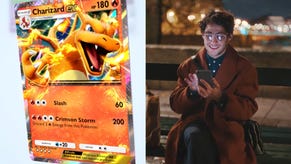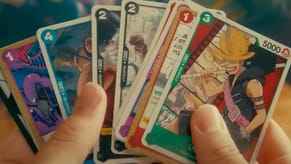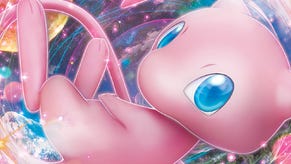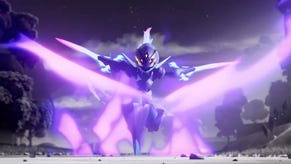The Pokémon World Championships’ transformation of Japan into a real-life Pokémon world was unlike anything I’ve ever experienced
Yokohama’s hosting of the TCG and video games’ prestige tournament put celebration and community first.
If Japan was going to host the Pokémon World Championships, it wasn’t going to do things by halves. Not a chance. Pokémon is loved by everyone, and I mean everyone. Every time you step foot into a Pokémon Center it isn’t uncommon to see multiple generations of the same family all competing for the plushies and goodies hidden inside. You have the diehards, but those same families were equally excited for the biggest event in the competitive calendar to make its first-ever stop in Japan.
Including me. That’s why I was there too, sitting on the short train from my home in rural Kanagawa to the host city of Yokohama, three whole days before the doors opened to the public on Friday August 11th. Just because the games hadn’t begun, that didn’t mean that the festivities weren’t already in full swing.
The Championships were their own thing, promising special events from drone shows to a Japanese festival-like Matsuri Park where you could participate in traditional obon dance with Pikachu to an orchestra alongside the main event’s four competitions in Pokémon Go, Unite, the video games and the TCG. Beyond that, the whole city had its own events planned to mark the occasion.
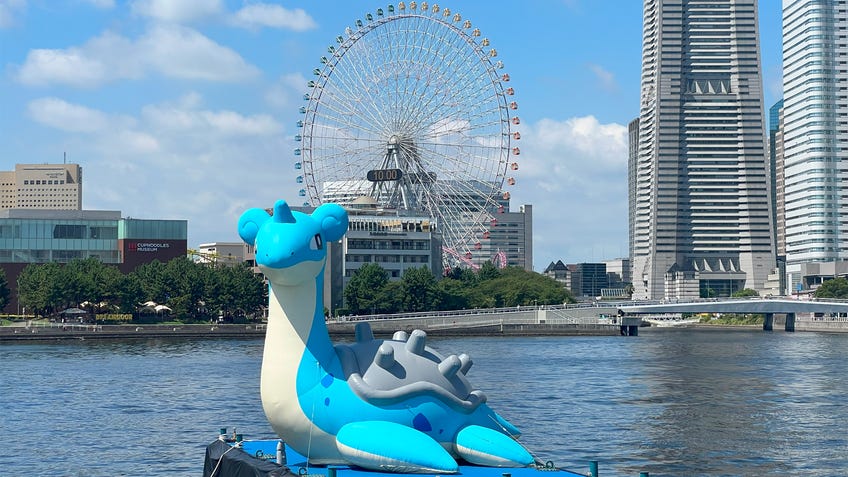
It’s said that Vermillion City from the Kanto Region of Pokémon Red and Green (as well as the later Blue and Yellow) was inspired by Yokohama, with footage from the original games used when announcing the event would be held in the city. Vermillion is where the S.S. Anne makes port in the games; Yokohama, too, has a large port which hosted its own replica of the ship, the Nippon Maru cruise ship decked out in Pokémon decor for the event. It’s not a one-for-one match for the real thing, since Yokohama is a still-walkable but far larger business metropolis: sleek and modern, yet alive with its own Chinatown, theatres, a cable car, giant ferris wheel and so much more, the Landmark Tower standing tall in the centre like N’s Tower from Black and White. But if you’re bringing the World Championships to Japan, there’s no place better than Yokohama to host it.
Stepping out of Sakuragicho Station in the heart of Yokohama felt like walking into the world of Pokémon.
Compared to Tokyo it feels distinct and unique, yet altogether welcoming. It’s a city that’s already embraced Pokémon thanks to yearly Pikachu Outbreak parades and events since 2014 that light up the summer, creating a celebration of the franchise perfect for the blistering heat of summer. So of course they’d go all-out when the World Championships came to town, turning a one-week celebration into an all-summer festival.
Indeed, stepping out of Sakuragicho Station in the heart of Yokohama felt less like walking into a city I was familiar with and instead like walking into the world of Pokémon. All that was missing was a Gym Leader to challenge and an appearance from Team Rocket.
The entire city of Yokohama had embraced the event, leaving trinkets for excited fans hidden around every corner. Some were obvious; at the station, banners for the World Championships were all around the station, tapping your card to enter and exit made a Pikachu sound instead of a normal beep, and there were giant inflatable Pikachu everywhere. Standing next to them were staff members holding Pikachu hats that everyone, no matter their age, were happily wearing as they sauntered around the city.
A nearby map confirmed over 20 separate locations where themed Pokémon events were going on around the city. These ranged from a bunch of photo spots to drainage lids replaced with Pokémon artwork to hidden Pokémon to a special art walk. If that wasn’t enough, this was all wrapped in a special digital stamp rally rewarding those who visited everything with a special mobile wallpaper.
The photo spots were unique Pokégenic installations, blending Pokémon into the real-life scenery of the city. While some were obvious, like murals of Pokémon-themed umbrellas or collages of Pikachu, others were more unique - like a Bidoof with its butt sticking out of a hedge in search of food or a Sunflora in a bed of real sunflowers. This also extended to hedges cut out to look like Pokémon and Applin hidden in a box of apples.
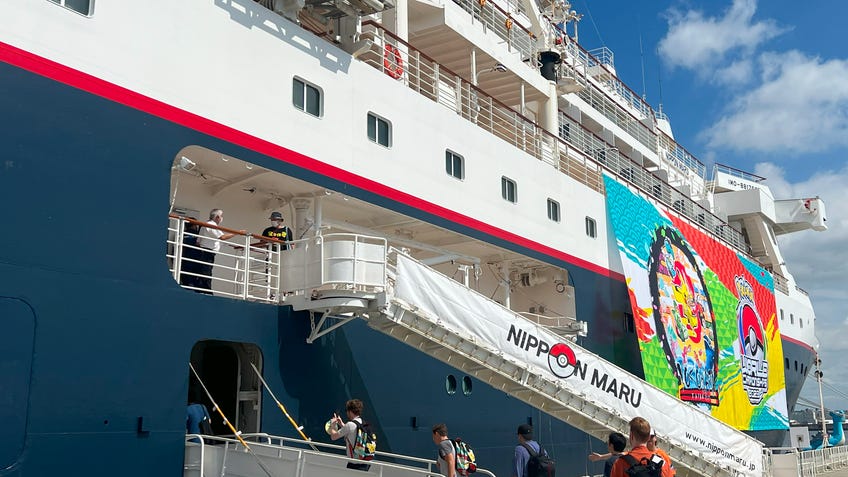
There were Pokémon cards everywhere across the city, in all sizes. Some were 3D photo spots you could pose with, while others included a giant Pikachu card recreated using flowers and sand at the base of one shopping centre. Even more were printed and placed on windows, walls and doors. Another shopping centre had blown-up reproductions of the original artwork used to create some of these cards, while the very top floor of a third shopping centre housing the city’s Pokémon Center had a pop-up museum showcasing all these cards in display cases, playing out like a trip through memory lane.
Yet somehow this was just the start. Despite a map and a stamp rally marking every location, there was always something new that you never expected to find or wasn’t even on the map as you made your journey. This is what made you feel like you entered a real Pokémon city rather than a pop-up installation.

Plusle and Minim and Poké Ball neon light exhibits next to the Red Brick Warehouse and Yokohama Bay. No fewer than four pop-up Pokémon Centers with exclusive goods different to both the Worlds Store Pokémon Center and the general stores. Convenience stores with Pokémon souvenirs and stores commandeering the paper Pikachu hats to fit on fashion mannequins. Collaborations with the Cup Noodle Museum and Baskin Robbins. The ferris wheel lighting up at night in Pokémon iconography. Still, there was more.
Even returning to the city for a second day before the main event, I hadn’t seen everything. It made the London Pokémon Center pop-up, as cool as it was, look like a local convention in comparison to the overwhelming presence of the franchise on every street corner.
It’s a good thing Yokohama had so much to offer Pokémon fans, as a lot of people were unable to make it into the World Championships’ main venue or the special Pokémon Center Worlds Store selling exclusive merchandise. Entry to the main venue and all its special events - from the orchestra, Matsuri Park and special shows (music event Imagination! Into the Next!! and drone display We Move!!) to the Worlds Store - were limited to pre-event lottery applications where winners would be given entry times to return to the show. Those who were competitors had their own timeslot on Thursday evening before the competition began to enter the store, too.
While this all sounds like an effective and organised solution to herding many thousands of Pokemon fans from location to location, it was far from perfect and in some areas mismanagement created disgruntlement for all involved. Registration for competitors for the event itself required players and accompanying spectators to queue for hours in the notoriously-hot Japanese summer heat, many waiting for three hours or longer in over 30C heat just to confirm their place. In some cases, players reportedly suffered heatstroke or became ill, leaving them unable to compete.

Mitchell was competing in the TCG, having come to the event from Australia. Although they were out of the running for the Day 2 competition by the time we spoke, they had mostly been enjoying the event, particularly the theming of the city away from the venue and the chance to play on such a big stage.
“There were some problems with the registration process, people were lining up in the sun for hours and then people had to wait ages to get in,” they said. “We got here very early and still had to wait a decent amount of time, but once we got in everything’s been a great experience.”
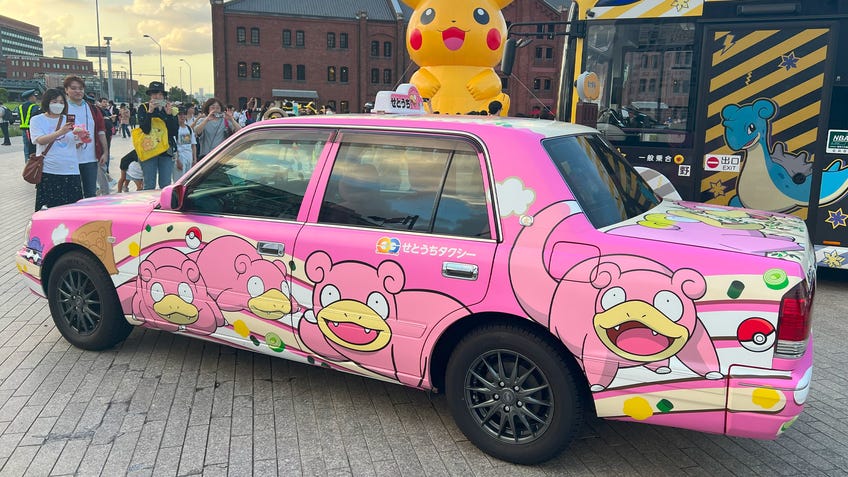
That’s before discussing the controversy surrounding the late cancellation of the traditional Open competition - typically held at Worlds events every year - just weeks before the event was due to get underway. Alongside the main event, it had been typical for Open competitions to be held concurrently with the main event for spectators who hadn’t qualified for the main competition, offering them their first opportunity to put points on the board towards qualification for the following year’s World Championships.
There was always something new that you never expected to find or wasn’t even on the map as you made your journey.
The cancellation offered no explanation, but upon entering the venue the logistical issues of hosting such an event became clear even to the many spectators I spoke with over the weekend. At first glance, the venue was large, offering space for a lavish main stage themed around traditional Japan - complete with a fake pond, traditional sliding-door Japanese houses for competitors to enter the stage and a giant taiko drum in the centre.
However, it was an event begging for more space. The venue felt a little close for comfort even for what went ahead, never mind the events left by the wayside. Initially I expected the Open cancellation would leave open space to relax inside the main hall, but I often found myself escaping the room to retreat outside, craving a break from the claustrophobic space that had been created inside the Pacifico Yokohama convention centre.
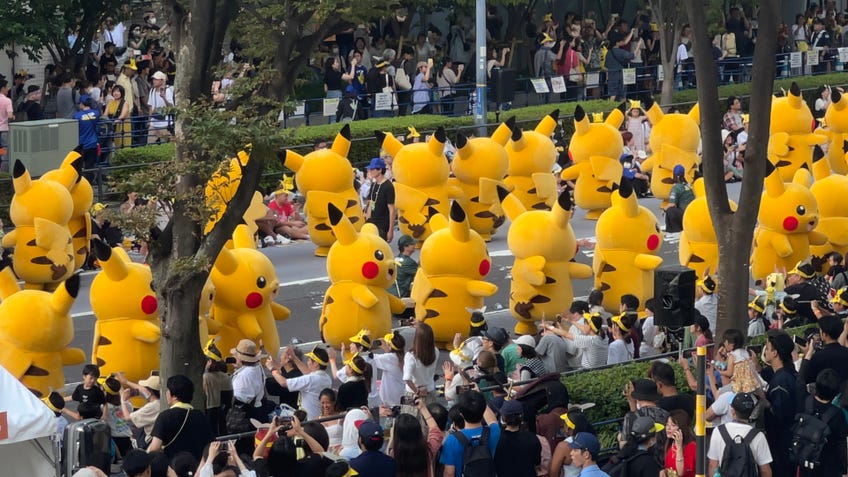
Between all four competitions, thousands of people had qualified for the World Championships, in most cases flying to Japan on their own dime to compete. Many brought family - if not for support, then to enjoy a holiday in a country they may not normally have an excuse to visit; Japan had been closed for years during the COVID pandemic and is a long journey for many people outside Asia, making it a potentially once-in-a-lifetime holiday opportunity even outside the main event.
Even if the Open was a necessary cut, it was nonetheless disappointing for many spectators who once hoped to take part in the event. Jeff and Maria from California were attending the event and visiting Japan for the first time to support their child who had qualified for the event. While one of their two children had qualified, the other was a spectator like them left without much to do in the interim.
The second parade was an all-new spectacle special to the World Championships that was more reminiscent of a Disneyland Parade than the smaller-scale Pikachu Procession.
“A lot of people had already booked travel to come who didn't get into Worlds, and now they're sitting here like my kid playing Switch, so it's kind of a bummer,” Jeff said.
These were all issues that compounded to hinder the enjoyment of the event for many attendees, especially once technical issues noted by some players were also factored in. It’s a shame, as the competition on display at this year’s event was one worth experiencing, especially as it came to a head in the finals.
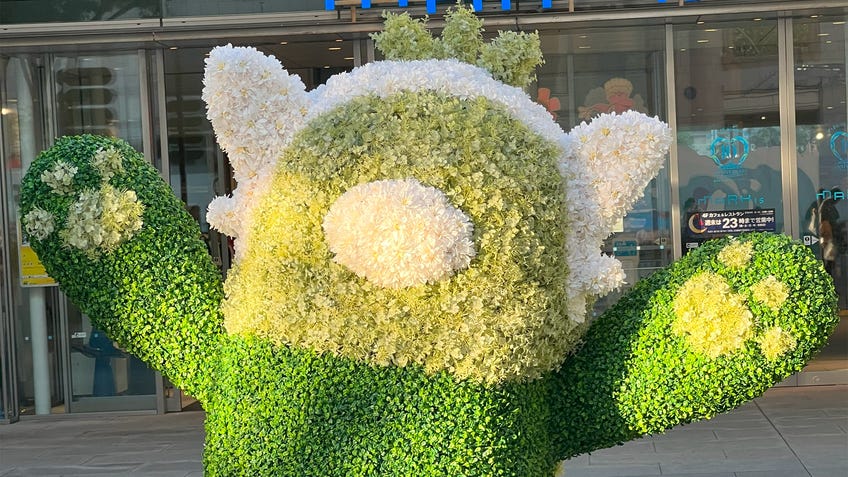
As we entered the TCG finals, the variety of top decks on display was a refreshing showcase for the game as an all-international finals in all three categories produced entertaining spectacles. Particularly of note was the victory of Vance Kelley in the final of the Masters Division against Tord Reklev, a match of two even-handed talents - albeit one with more experience on the biggest stage - fighting a grinding, tense match that went to time before the speedier Mew deck run by Kelley ultimately helped the underdog emerge victorious.
The crowd were on their feet in approval, cheering along as every attack and Boss’ Orders was used to shift the balance of play towards an ultimate triumph.
In moments like this, when people from across the world come together in one room for the love of Pokémon, the issues the event suffered fade away, at least a little. You’re left remembering the ambient joy of wandering around Yokohama, the thrill of the match, the joy of victory and pain of defeat, rather than some of the struggles that got you there. And for a few players, they got to experience the biggest thrills of all.

It was a true celebration that wasn’t truly over even as the sun set on the final day. The next day, I returned to Yokohama to experience what can only be called the grand finale of the event, with two final parades taking over the centre of the city. When Pokémon first took over Yokohama in 2014 as a mere movie promotion, Pikachu marched down the street in formation. This year, crowds once again attended in droves to watch the most adorable procession of Pikachu so close you could even hi-five them as they came to greet audiences when their discipline in the march inevitably, adorably, fell away.
It was the second parade that will stick most in my mind when the event is nothing but a distant memory. Not too far away from the location of the first, this was an all-new spectacle special to the World Championships that was more reminiscent of a Disneyland Parade than the smaller-scale Pikachu Procession. Almost every Pokémon you could think of, from Lucario to Lapras, Gengar to Geodude, alongside what must have been at least 100 Pikachu, were set to march. As a result, crowds were there over an hour before the parade began.
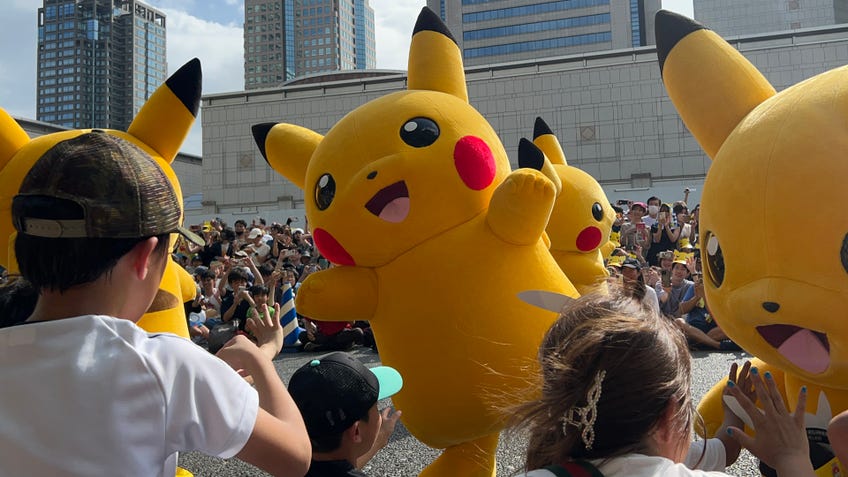
I brought my Pikachu plushie for the occasion. It was the special Worlds Pikachu, posing with their tasty bowl of ramen, and had rather jovially been attached to my microphone for much of the weekend as I spoke to attendees and players. A Japanese family stood next to me, their very young kid initially restless waiting for the parade to start. Until they spotted my Pikachu sitting at attention on the edge of the bridge, also ready to watch the procession unfold.
They took great interest in the plush toy, staring with intent. Playing along, I let Pikachu ‘greet’ the kid, cracking a laugh. Before too long, the two of us were playing games while we waited, pretending to feed Pikachu and eat the ramen ourselves, pretending to turn our hands into their ears or tail as we laughed and played. It must have been over 30 minutes we played together, as before long the extended wait for the parade ended and the show began, and the parents were just as excited to see the Pokémon march by and take photos as we briefly spoke. At the end, we said our thanks and goodbyes, the kid grinning as they said bye to both me and ‘Pikapi’.
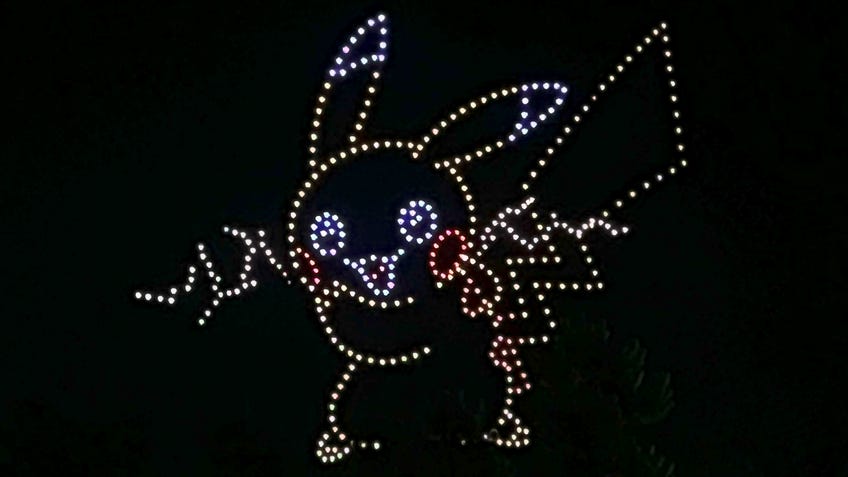
There are countless stories like this. Jeff and Maria were grateful for their kids getting into competitive Pokémon as they visited so many places they never would otherwise, and created a community of fellow parents who would meet at every event to gossip while their children played.
“I've met some fabulous parents that I've seen in other regionals - the community not just for the players, but also for the supporters, is phenomenal,” was something Maria expressed particular gratitude for.
It was a true celebration that wasn’t truly over even as the sun set on the final day.
Across languages, borders, genders and race, everyone was there for Pokémon. From the elderly to babies and even dogs, Pikachu hats were everywhere, and people were meeting and coming together who never would otherwise just because they all love this franchise. This child with such confidence was all too happy to play - something nice when, at other times, unless I’m with my Japanese friends, adults will at times ‘other’ me simply for not looking Japanese as I try to live my life here just as much as they enjoy theirs.
It breaks barriers wherever it goes, leaving community in its wake. Pokémon is pretty wonderful, isn’t it?



